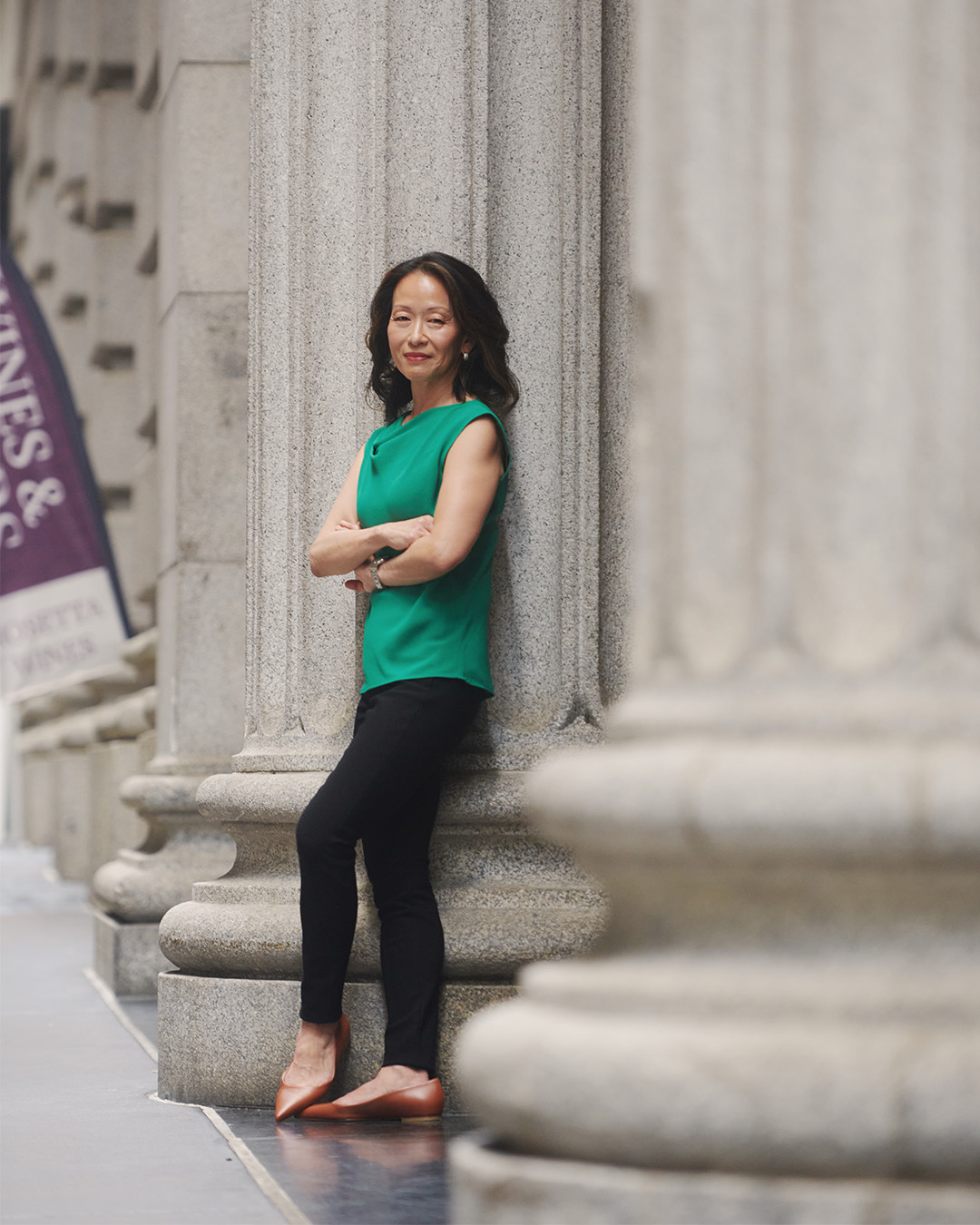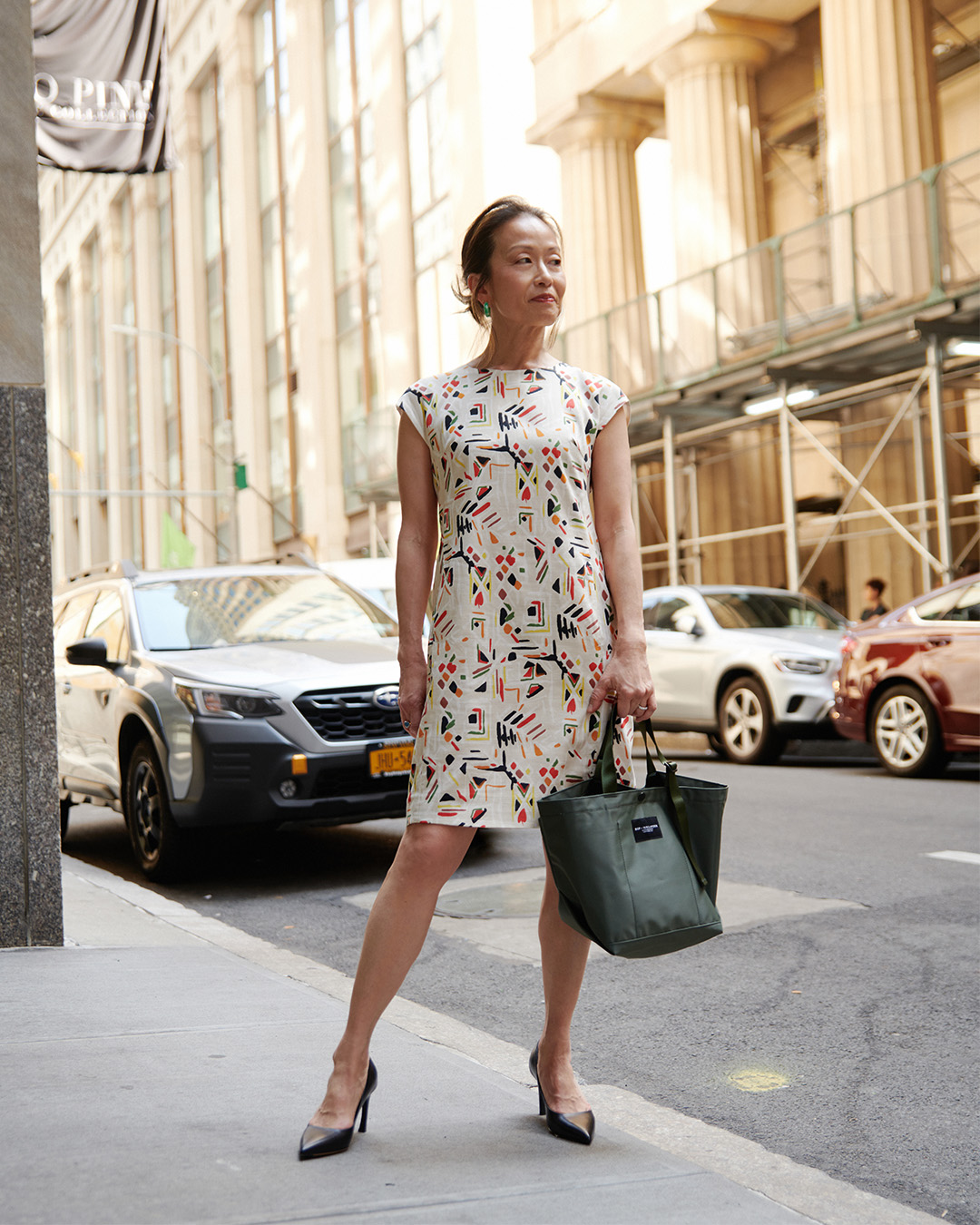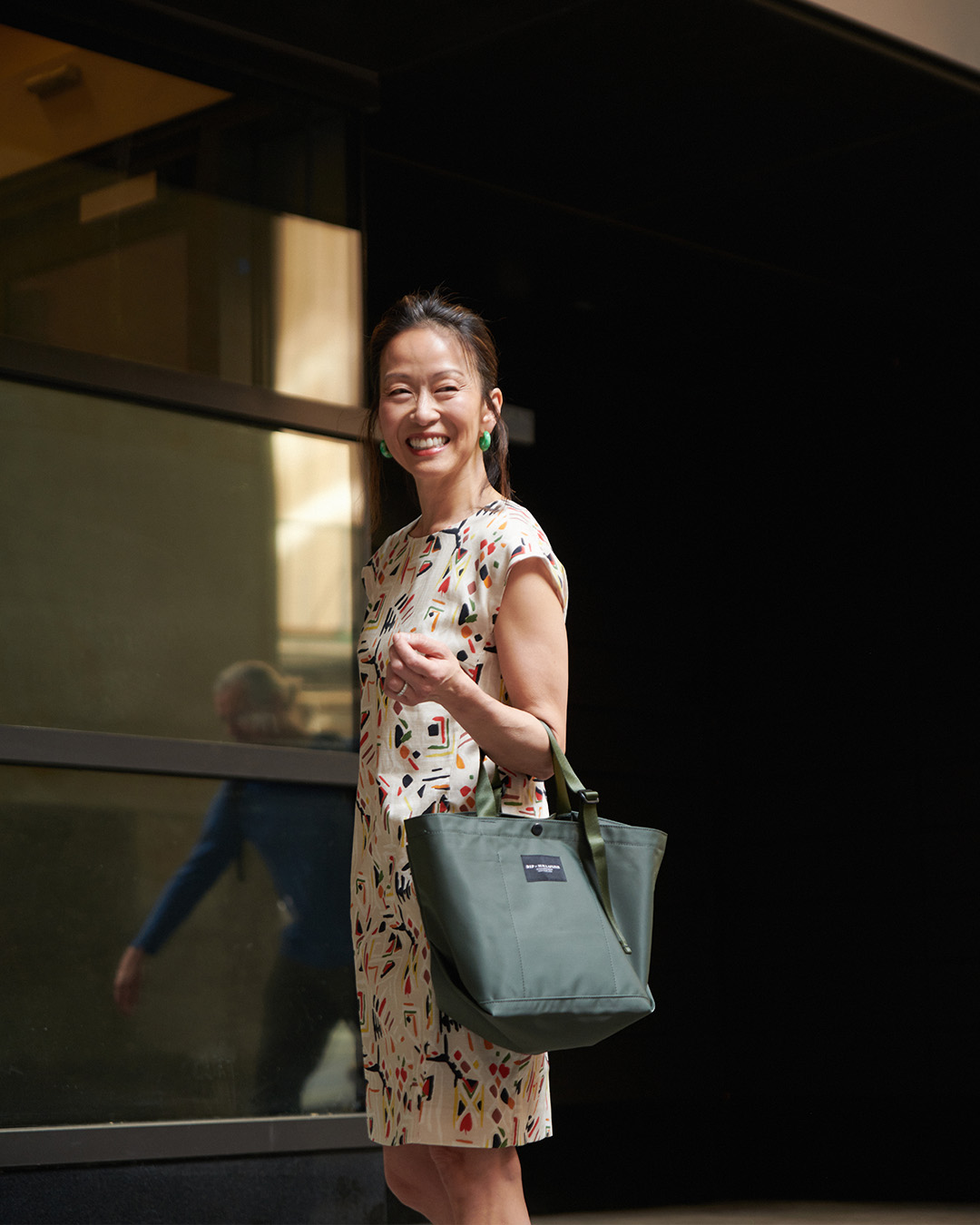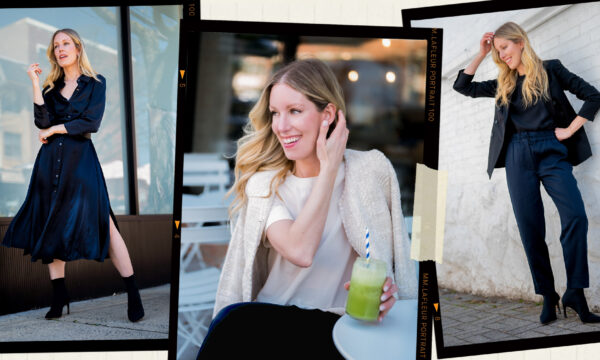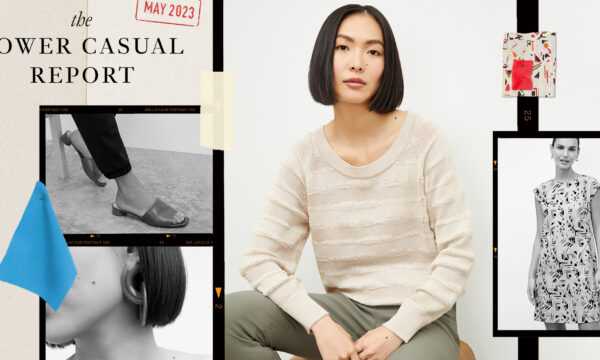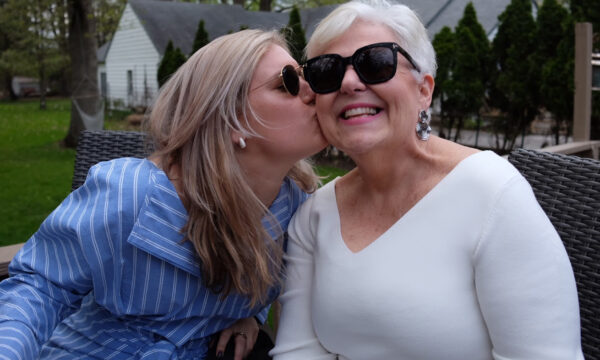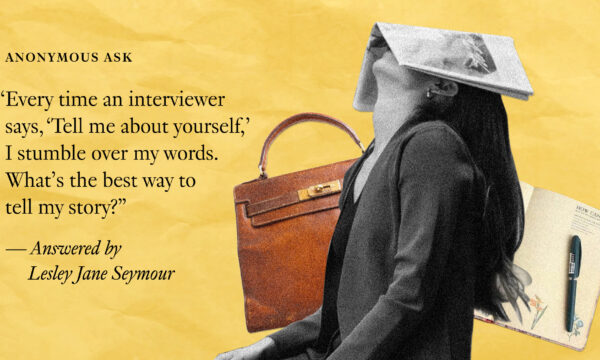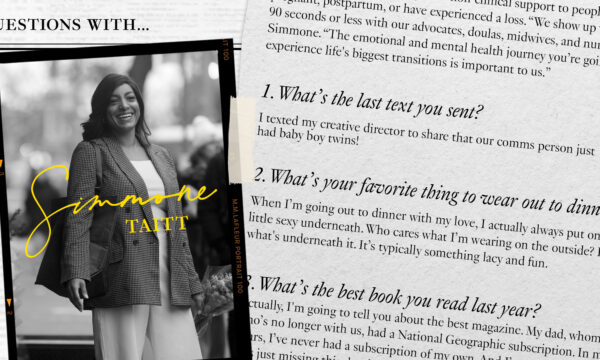
Shop This Look
How Three Different Doctors Wear One Mix-and-Match Capsule Wardrobe
For these healthcare professionals, clothing matters more than you might think.
If you’re not in the healthcare industry, you may have the same misconception that I did: that doctors either wear scrubs or long white coats that cover up their outfits, rendering personal style irrelevant. I couldn’t have been more wrong. In this interview with M.M.’s founder and CEO, Sarah LaFleur, the three doctors she spoke with made it clear that clothing is a key part not only of the way they feel, but also of the impact they’re able to make for their patients.
For Dr. Lakshmin, a psychiatrist specializing in women’s health and the founder of Gemma, whose new book, Real Self-Care: Crystals, Cleanses, and Bubble Baths Not Included, came out earlier this year, clothing is one way of sharing who she is. “It’s really shown up for me during the book launch, because I’ve been in the public eye a lot more than I ever was before,” she explains. “The clothing that I pick has to align with my values. Wearing something colorful and unexpected symbolizes that the stuff I talk about is a little bit provocative. It’s a little bit risky. And what I wear is part of that package. Clothing is a big piece of how we show up as leaders, especially as women. For better or worse, it really does matter.”
Dr. Henry, a board-certified dermatologist and the founder of Skin & Aesthetic Surgery, started thinking about the power of costume at a young age, thanks in part to guidance from her great-aunt. “She loved a good lipstick,” says Dr. Henry. “Even if she was just going to the mailbox, she’d put on lipstick.” Today, running her own practice, Dr. Henry thinks of her wardrobe as part of the patient experience. “We’re aesthetic, and my patients love it,” she says. “They want to see the shoes and the dress—it’s part of the conversation.”
Dr. Choi is a reproductive endocrinologist and the Chief Medical Officer at Progyny. She’s also the doctor who helped Sarah have three adorable babies—so for months, Sarah had a front-row seat to Dr. Choi’s impeccable style. “You have excellent taste in fashion,” Sarah told Dr. Choi during their conversation. “Every morning, when I would come in for my checkup, you would always walk in looking so gorgeous.” This was no accident on Dr. Choi’s part: “I feel that it’s really important to look stylish—for my own well-being, but also because it gives me a professional front,” she explains. “I want to look confident and trustworthy. I also want my outfits to be functional and fuss-free, so I can focus on taking care of patients and working with my team members.”
This capsule was inspired by doctors, but the pieces in it transcend industry. These styles are for any woman who wants to feel confident, look professional, and move through her day with ease. Below, see the outfits and read Sarah’s conversations with these three healthcare heroes.
Want more M Dash?
Sign up for our weekly newsletter.
Thank you!
Dr. Pooja Lakshmin
Her Closet
You’re a very busy doctor, you run a business, you’re an author, and you’re a mother. What does getting dressed in the morning look like for you?
I was a little bit nervous to talk about this, because I do not consider myself a stylish person. I actually work from home—I see all my patients and run my business virtually—so I wear a lot of elastic waistbands, and then I’m business on the top. I love jewel tones, which M.M.LaFleur does so well, and I wear a lot of bright lipsticks and statement earrings. I’ve realized, especially in the past three to four years, that comfort and texture are so important to me. Prior to the pandemic, I hadn’t paid as much attention to the physicality of my clothes.
What adjectives would you use to describe your personal style?
Bold, not serious. During the book launch, I’ve actually worn a lot of headbands. That’s partially because I’ve been dealing with postpartum hair loss, but it’s also because you don’t usually see psychiatrists giving talks with pink headbands. It’s fun, and I want to convey that, especially because the material that I’m talking about is heavy.
My style is not too stiff, and it’s a little bit chaotic. I’m a mom, and I’m trying to balance all these things. There’s no magic secret sauce here. I think it’s important to show that.
What is your favorite piece from the M.M. capsule?
I love the Nora top in clover. Growing up South Asian, color is something that has a lot of meaning. I was always told, “Don’t be too colorful. Don’t do anything that stands out too much.” So this green that really speaks for itself—I love it. And, of course, the feeling and the fit are just gorgeous.
Her Career
What is real self-care? How is it different from fake self-care?
Real self-care has to be built into your life. It’s more than just taking 15 minutes to meditate or do yoga. Self-care is in all the choices you make. What’s your career? What do you want to do with your life? Who’s your life partner? Do you want to have a life partner? Do you want to have a baby?
I know these are really big questions, and my patients are often like, “Dr. Lakshmin, geez, it’s 11am. Why are you asking me all this hard stuff?” But the reality is that in each of these big life choices, we have to care for ourselves. These choices are how we care for ourselves. I’m not knocking the meditation or the bubble baths—they’re our life rafts, and we need the break—but real self-care is the swim-to-shore plan.
What’s one thing women can do to take that first step toward real self-care?
In Real Self-Care, I talk about “the pause,” which basically means taking a step back when somebody asks you to do something and recognizing that you have three choices: You can say yes, you can say no, or you can negotiate. And “no” isn’t accessible for everybody. Depending on the color of your skin, your identity, how much money you have—you can’t always say no. But the pause is always accessible. Especially for moms and caregivers of any type, who are just going, going, going, and taking care of everybody else, it’s powerful to actually step back and say, “I’m going to take a breath, and I’m going to think about what I want here.”
You can insert the pause everywhere. It can be a big thing, like getting an email from your boss that says, “Hey, can you take on this new project?” In that moment, you can pause and perhaps respond with a question like, “What will it entail?” versus just saying “yes” right away. It can also be something as simple as pausing and saying, “I’m hungry right now. I’m going to go get myself a snack,” instead of just powering through and answering another email.
Embracing the pause involves letting go of some ego, too. Especially as women, we’re used to being the ones who save the day.
Her Brain
M.M.LaFleur was founded on the belief that when women succeed, the world is a better place. What does success look like to you?
For me, there are two pieces of this. One is my impact. That looks like a little brown girl who sees me on Instagram or reads my book, and thinks, “Wow, I can do that too. I can be a doctor in a different way. I can be a creative. I don’t have to fit the stereotypical Asian mold.” That’s really important for me.
Personally, success looks like having the flexibility to choose who I work with and what projects I take on, making sure that everything I build is aligned with my values. It takes a long time to build a career where you have that flexibility, and I hope that 10 years from now, I’ll be able to look back and feel like all those puzzle pieces came together with what we are building for women’s mental health at Gemma.
If you from 10 years ago could see where you are today, what would she say?
This is a deeply meaningful question for me, because 10 years ago was when I left medicine and was actually super depressed. Turning 30 in my parents’ house, in my childhood bedroom, I was pretty sure that I had royally screwed up my whole life.
I had been in this wellness group, which later turned out to be a cult (that’s a whole other story, which people can read about in my book). But I turned 30 after I had left that group, and I was facing this huge, mountainous task of coming back to medicine, explaining myself, and admitting that I’d failed. It took so much courage, and a lot of therapy. I had to swallow my ego.
Seeing myself now, I’m so proud. I’m proud that I stuck with it, that I didn’t give up, and that I was brave enough to face failure and say, “I came back.” I think it’s proof that change happens and growth happens. If you’re willing to face the hard stuff, eventually, you will come out on the other side.





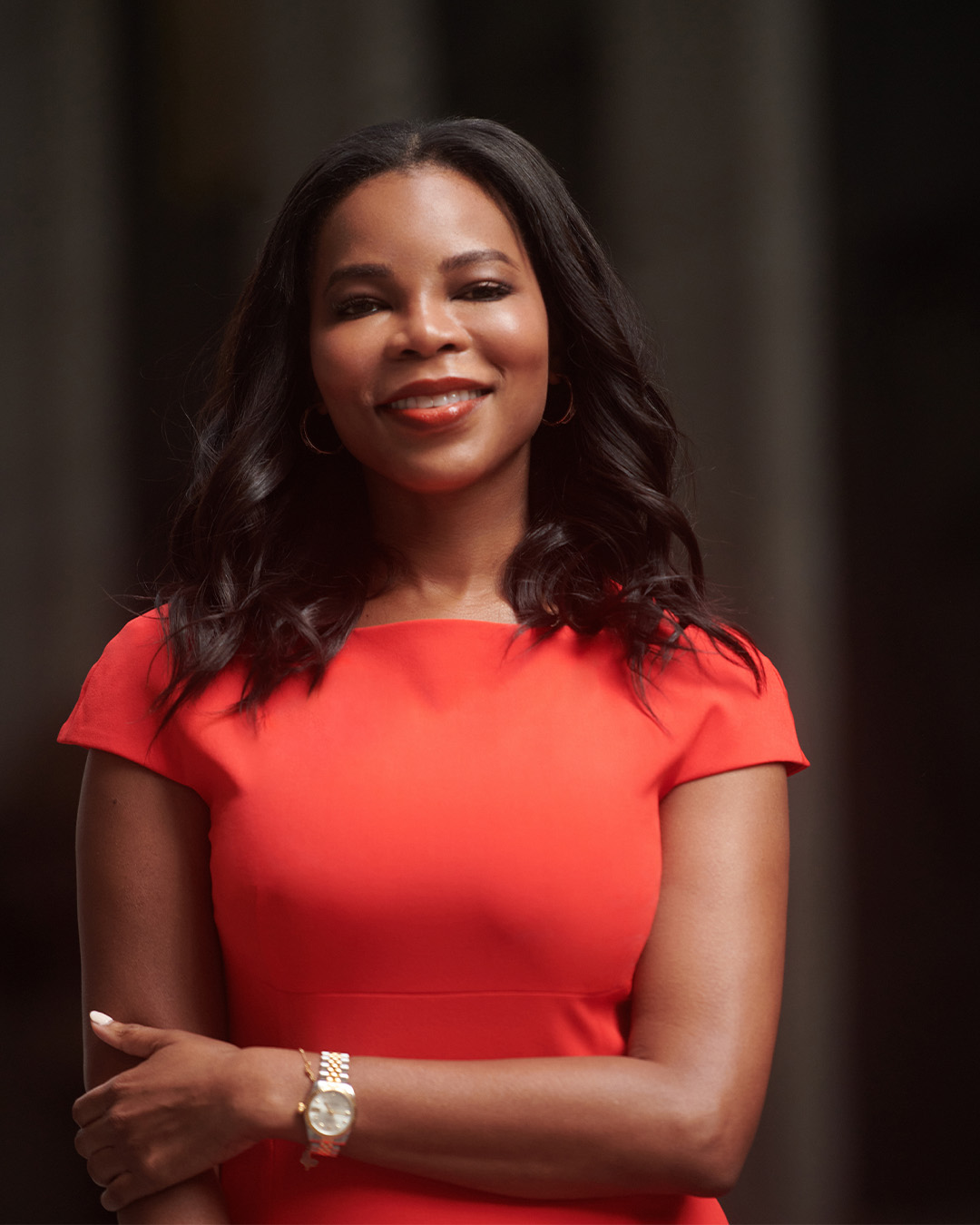
Dr. Michelle Henry
Her Closet
When you’re getting dressed, what do you think about?
Comfort—because my days are long, and they’re varied. I can go from injecting filler to excising a cyst to kneeling in front of a three-year-old, so I need things that I can move in. But I also need to look really good, because it’s Manhattan, and we have to be very chic. I love bright colors and jewel tones. In some ways, I’m the anti-New Yorker.
Her Career
I want to ask you for your number one dermatology tip. And I know most dermatologists say wear sunscreen, don’t smoke, and drink water. But outside of those three things, what is your number one tip?
You’re right—those are absolutely critical. But I’d say another one is consistency. If you find a product, you have to use it for a period of time and really stick to your skincare regimen to see results. My second tip: retinol, retinol, retinol. If you can tolerate it, it’s one of the most transformative ingredients in all of skincare. And three is sleep. I think we under-recognize beauty sleep. It’s real, it’s important, and it’s rooted in science.
How did you end up in dermatology?
I knew I was going to be a doctor since I was around six years old. My mom was a nurse, and she had take-your-daughter-to-work day. At her work, I kept seeing this little huddle of very important-looking people that seemed to be talking about very important things. And I said, “I want to go over there.” So my mom went over to the doctors and said, “I think she’s interested in being a doctor.” They found me a mini white coat and a little stethoscope, and that was it—I decided I was going to be a doctor.
I always thought I would become a breast oncologist. My great aunt died of breast cancer, and during the last six months of her life before she died, we talked about everything—who to date, how to dress, and what to be. But when I got to medical school, I was just called to do something different. Now, I’m a skin-cancer surgeon; I was actually called to dermatology through skin-cancer surgery. I loved that there was an artistic component of reconstructing the area, and I loved preaching about prevention. I was told “If you love this, you will love dermatology.” And here I am.
It sounds like your great aunt gave you a lot of good advice. What’s one piece of life advice she gave you and one piece of fashion advice she gave you?
My aunt is Caribbean, from Grenada, and very old school. She would always tell me, “Whenever you wear a dress, a lady wears a slip.” No one wears a slip now, but I still have mine from when I was eight years old.
She also told me to always listen before you speak—not just as a way to be demure, but as a way to be strategic.
Was it hard starting your own practice, or did you feel very ready?
I was terrified—absolutely terrified. Medicine is a long road, and I didn’t have many jobs prior to that. I worked at a T-shirt stand when I was 16. I worked at a motor bank that fired me because I kept studying for my MCAT at work, and that was really it.
I was concerned that I wasn’t going to be as strong at the business side of things, but then my mom reminded me that we come from a family full of natural businessmen and women. She was absolutely right: I took to it really quickly. I love strategizing and fine-tuning my practice to give my very specific patient the optimal experience.
Her Brain
M.M.LaFleur was founded on the belief that when women succeed, the world is a better place. I think the definition of success is so varied and personal. What does success mean to you?
It may sound a little cheesy, but it is really just loving what I do and liking how I do it. I started my practice two years ago because I love my work, but if you can’t do it the way that you want to, in a way that aligns with your values and your beliefs, you stop enjoying what you’ve worked so hard to create. So success, to me, is loving what I do and having the flexibility to do it in a way that feeds me and the people I serve.
If the you from 10 years ago could see the Dr. Henry of today, what would she say?
I always wanted to start my own practice. I always envisioned this career, and I think part of how you get there is really believing in yourself. So she would say, “You did it,” but she always kind of believed that you could.
I’ve also always had this vision that I would do things outside of medicine, too. I’m really driven to do work around the rights of women and young girls, and I have a lot of projects that are about inspiring young women, especially in terms of their self-esteem. Coming from such a visual field, it’s really important to me to lift up girls who may struggle to realize how beautiful they are. I’m doing all those things, and I’m really happy.
Dr. Janet Choi
Her Closet
As a doctor, what’s something you have to consider when getting dressed that people might not be aware of?
It’s super important to have something that’s easy on and easy off—like the oven cleaner. I need to look professional when I’m consulting with a patient across a desk, and then be able to whip off my clothes, put on my scrubs, and run to the operating room.
The second thing that’s super important: pockets. I look for pockets in pants and dresses, so I can stash my rings—because I have to glove up and do pelvic exams and ultrasounds, and I don’t want to lose them.
Do you have a go-to capsule wardrobe that you rely on?
For work, I usually like slim-cut pants, like the Skinny Foster—super comfy, yet far more stylish than leggings. On top, I like to wear bright colors. For my shoes, I’ll put on a pair of Nikes to run around, and then change into slides or heels when I get to work. I’ll never say no to a good jumpsuit, especially on the weekends, and in the summertime, I’m ideally wearing a dress with pockets.
What’s your favorite piece from the M.M. capsule?
I’m going to have to say the Nora top. It looks super professional, and it looks and feels like silk, but I heard that it’s actually machine-washable, which is shocking to me. And I love the jewel-tone green color.
Her Career
How did you end up becoming a fertility specialist?
It started off pretty young, because I had some great role models and mentors—beginning with my two physician parents. Both of them emigrated from Korea in the ’60s, when there was a physician shortage in the U.S. I grew up watching them and hearing them talk at the dinner table about how fulfilling their work was—as hard as it was. As time passed and my interest in women’s health grew, I decided to follow their pathway into medical school.
I had some fantastic mentors during medical school and my residency—in particular, three reproductive endocrinologists come to mind. Reproductive endocrinology was and is, for me, the perfect intersection of science and art. I like having this ongoing dialogue where it’s not just me telling my patients to do something. Instead, it’s about working with each woman, helping her, and learning from her journey and experiences.
What’s the best thing about your job? What’s the hardest part?
The best thing is when I finally see a patient I’ve been helping, who’s suffered two or three or four losses, or years of infertility, finally make it past the finish line and show up a year later with a baby in her arms. She may look exhausted, but she is beaming from ear to ear. That never gets old.
The best thing about my new job as CMO of Progyny is getting to extend my reach to potentially help millions of individuals (currently, Progyny touches 5.4 million members’ lives). In this role, I’ll be able to support members through any fertility struggles they may encounter so they can realize their goals of parenthood.
The hardest parts are also the most humbling parts. I’ve learned so much, I have so much to contribute, and I work with some of the best embryologists, nurses, and support staff in the country—and yet, sometimes, it just doesn’t work, and I have to call someone with their negative pregnancy test. Equally devastating, if not more, is coaching someone through loss. But the silver lining is that it makes me realize, one, that humility is important in medicine. We can’t solve everything. And, two, it makes me want to learn more and work harder to improve the patient experience.
If you had a 20-year-old daughter who wanted to have a baby, what would you say?
Here’s what I tell all my patients when they come through the door for an egg-freezing or embryo-freezing consult: “It’s great that we have this fantastic science and technology available. It’ll give you an option if you have some eggs frozen. Do it when you’re younger, if possible, but realize that it’s not a guarantee that you’re going to end up with a baby. Having 15 eggs in the freezer is not a guarantee of 15 babies in a freezer.”
At the same time, it’s a juggling act—trying to succeed professionally and in life, and then figuring out when to slot in having children. It’s not a crazy idea to think about freezing in your 20s or early 30s if you’re not ready. But also, continue to look out for yourself and your needs; if conceiving is an important desire of yours, do think about finding time to do so earlier in life.
I was born in 1983, and I’m approaching 40. When I was younger, the idea that you should freeze your eggs in your 20s or early 30s was kind of unheard of. Do you think that conversation is happening more now?
I think, thankfully, it is—and thanks to social media, it’s no longer as taboo as it was 10 or even 5 years ago. Science and technology have gotten so much better, especially if you can align yourself with a good center and comprehensive benefits to help support your journey.
A lot of women don’t realize—because sometimes, their doctors don’t tell them—that they’re born with a finite number of eggs: a couple of million, and once they’re gone, they’re gone. Many women are shocked to hear that you’re not just losing one egg each month; you’re losing a whole multitude, and there’s no way to slow it down. So if you’re not quite ready to have a child but want that in the future, fertility preservation is a worthwhile endeavor to consider.
Her Brain
M.M.LaFleur was founded on the belief that when women succeed, the world is a better place. Success can take so many shapes and forms. What does it look like to you?
I’ve spent a lot of time thinking about this, and the definition has really evolved for me, particularly in the past few years. Growing up as a minority woman and the daughter of two immigrant parents, whom I wanted to show respect to and honor, I had this idealized checklist of success. That meant going to the “right” college and the “right” professional school. I was joking with Pascale, our makeup artist today, that the choices were either doctor, lawyer, or—if you really wanted it—engineer. That was it. But I realized, after listening to my mom and dad talking about their work, that being a physician was incredibly meaningful. You’re giving back to your community, and it’s very fulfilling.
Hitting the medical-school career track was one box checked, as was becoming an OB-GYN, because I love supporting women in their health journeys. And luckily, along the way, I found a great partner in life, Dave, and we’ve managed to raise two lovely, lovely human beings. But I got to a point where, as much as I appreciated what I had life-wise, I was like, “There’s something else. What am I missing?”
I realized that, over the past few years, my definition of success has shifted. I realized that success is not about checking off items, putting diplomas on the wall, or getting recognition externally. It’s about really connecting with everyone in my life who means something to me—my friends, relatives, peers, and patients. To me, success means building and contributing to a community—a network of like-minded, intelligent, forward-thinking, strong, admirable, and generous women. It’s very isolating if you think, “I can do this all on my own. I’m going to be head honcho here.”
I’ve also realized that it doesn’t have to be a dichotomy, where you have to work, work, work and get to the top, and then you can relax. It’s about blending the two together and trying to incorporate some play—whether that’s doing some karaoke at the nurse’s station, taking a work call between kickboxing classes, if I have to.
The most important thing that shifted for me surrounding the definition of success is getting to a point in my life where I actually feel at ease with myself and who and what I am. I’m not looking for external affirmation; I’m just grateful for the journey that I am on—as opposed to feeling like I’m in transit, and once I get to the endpoint, I’ll be fine. That’s really helped open me up to life.
If the you from 10 years ago could see yourself today, what would she say?
Jokingly, she would say “Wow, 53 is the new 40.”
I think she would say I’ve gotten much further than I would have expected. She would say, “You have more ahead. Stay open-hearted, open-minded, and curious. That’s the way to have a full life.”
